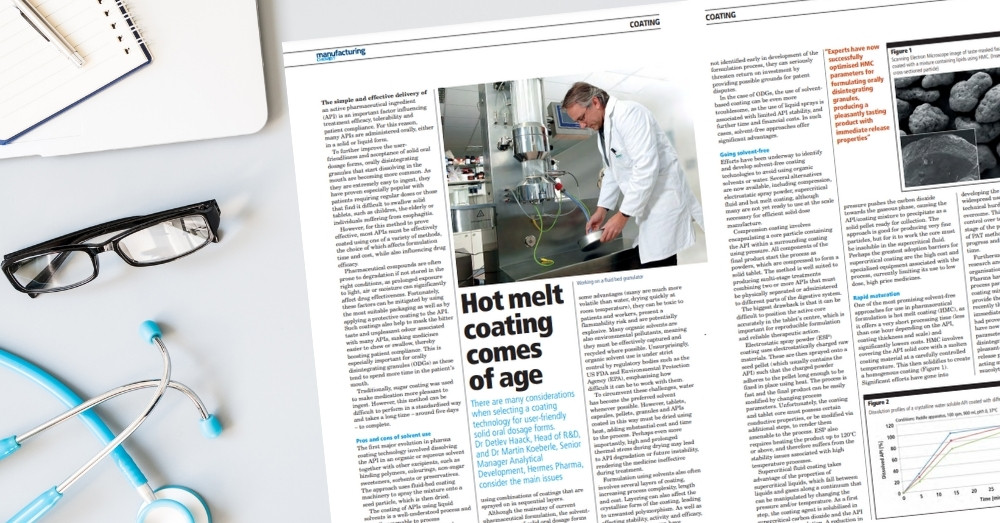Effective medical treatment using self-administered medicines often hinges on patient compliance. This is particularly true when repeated or multiple doses are required, or for those patients who may find it difficult to swallow solid tablets, such as children, the elderly or people suffering from esophagitis. One way to boost compliance is to formulate user-friendly dosage forms such as orally disintegrating granules (ODGs). User-friendly dosage forms are easier to swallow while ensuring excellent bioavailability, rapid release of the API and the minimisation of gastric irritation.
Unfortunately, many APIs have an unpleasant, bitter taste that must be efficiently masked in order to make such formulations easy and pleasant to ingest. Compounding this issue, these dosage forms tend to stay in the mouth longer and are tasted more thoroughly. Developing coatings that mask the taste of such formulations can be difficult, requiring a coating method that produces a pleasant taste and breaks down rapidly in the mouth. As with all formulation processes, the chosen method should be as robust, fast and cost-efficient as possible. Several methods exist for coating APIs, broadly classified into two groups depending on whether or not the coating process involves the use of solvents.
The article Hot melt coating comes of age outlines the pros and cons of these methods, coming to focus on the rapidly maturing technology of Hot Melt Coating (HMC), which is an effective method of coating APIs to produce dosage forms that are pleasant to taste and provide rapid API release. As a solvent-free method of coating, HMC offers short process times that lower costs and boost productivity. Although HMC requires optimisation on a per-drug basis, this offers unique avenues for IP protection while providing a cost- and time-effective option for use in pharmaceutical formulation.


